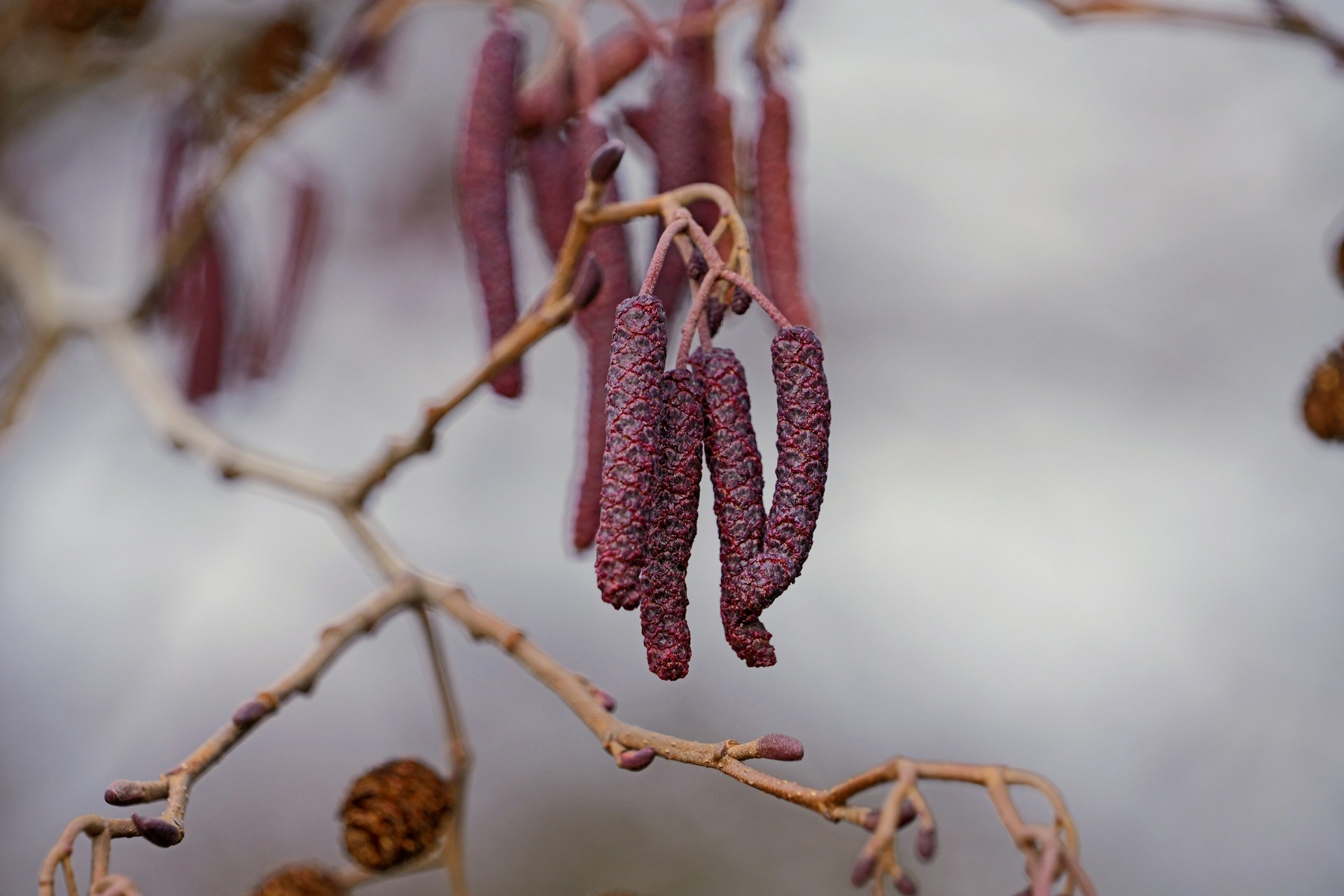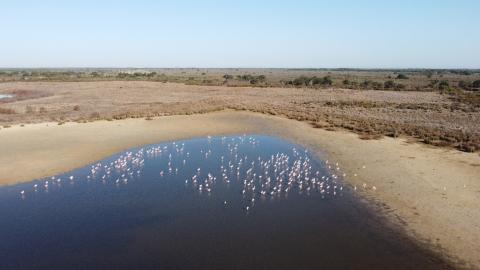Europe faces a seed dispersal crisis due to changes in animal populations
An international team of researchers has reconstructed the first European seed dispersal network based on a literature review. The data indicate that extinction threats and demographic changes in the animals that disperse them have resulted in 30% of plant species having their dispersers listed as 'high concern.' The lack of seed dispersal could hinder the recovery of declining plant populations. The authors publish their results in the journal Science.

Pedro Jordano - semillas EN
Pedro Jordano
Research Professor in the Integrative Ecology Department at Doñana Biological Station (CSIC)
The paper addresses a largely overlooked aspect in studies on biodiversity: the ecological interactions between species. This approach, particularly at a continental scale, is novel. While previous studies have recognized the importance of species interactions, this article reviews and builds upon an observation made years ago by Professor Daniel Janzen regarding the loss of ecological interactions: “What escapes our view is a much more insidious type of extinction [than species extinction]: the extinction of ecological interactions".
After all, no species on Earth exists in isolation; each species depends on others for survival. Therefore, the article tackles a crucial topic: current efforts in biodiversity conservation often overlook the functional aspects of biodiversity—those functions that arise directly from species interactions (e.g., pollination, mycorrhization, seed dispersal by animals, etc.).
The article provides a brilliant and compelling analysis of the diversity of interactions concerning the conservation status (IUCN) of the animal and plant species involved in these seed-dispersal mutualisms. The emphasis here is on the conservation status of the interactions themselves, rather than just the species involved.
Animal-mediated seed dispersal is essential for forest regeneration. If we lose frugivorous animals and the countless interactions they maintain with plants, forests would collapse: the seeds would simply not reach the ground in conditions suitable for regenerating plant populations. Their natural regeneration cycle would fail. In tropical rainforests, for example, more than 85% of woody species depend on frugivorous animals for seed dispersal, and in Mediterranean forests, this figure is as high as 60%.
Most conservation initiatives so far have emphasized pollination as a key mutualistic interaction that illustrates the interdependence between plants and animals (see, for example, the 2019 IPBES report). However, this article highlights the problematic status of other mutualistic interactions, such as seed dispersal, which has been relatively understudied.
The implications of the extinction of species interactions are profound. The authors show that one-third of the animal-dispersed species and their interactions are at risk of extinction in Europe, while 30% of plant species have most of their dispersers threatened or declining. This finding echoes Janzen's concept of “cryptic extinction”: interactions, and therefore their ecological functions, can be lost long before the species themselves go extinct. Even more concerning, the authors identify a persistent knowledge gap, with many species classified as "not evaluated" or "data deficient," for which we do not know their population trends.
When frugivorous animals reach low densities and become rare in a forest, their functional role as seed dispersers disappears. The loss of these dispersers leads to rapid changes in landscape dynamics, including significant changes in vegetation composition, where fleshy-fruited plant species gradually decline. This decrease in fruit availability, in turn, affects the frugivores themselves. Such landscape changes are already occurring in several ecosystems and are not slow processes; a field researcher can observe them throughout their life. It is alarming that this article shows that such trends are widespread in European biomes, from the Arctic to Mediterranean forests.
The main limitation is the lack of information about the population status of numerous plant and animal species, even in our well-studied European biomes. This prevents a complete understanding of the conservation status of these interactions in European ecosystems. At the same time, it suggests that the alarming estimates presented in the article may be underestimations, meaning that the real situation could be even worse.
The ecological processes that are likely to collapse due to a crisis in seed dispersal range from forest regeneration after disturbances such as wildfires to plant responses to rapidly changing climatic conditions on a continent already severely affected by habitat loss and forest fragmentation. Resolving this situation requires developing measures to protect habitats, fauna, and flora, ensuring the persistence of species at adequate levels to maintain their ecological functions.
Conflict of interest: ‘I have collaborated some time ago with one of the authors, Jens M. Olesen, but in the last 5 years we have had no collaborations’.
Daniel Montoya - Semillas EN
Daniel Montoya
Research proffesor at Ikerbasque, the Basque Centre for Climate Change (BC3)
This is the first comprehensive study on the vulnerability of seed-dispersing species. The authors have compiled an extensive database of 11,414 interactions between 1,902 plant species and 455 seed-dispersing animal species, including 283 birds, 85 arthropods, 69 mammals, 11 reptiles, 4 mollusks, 2 fish, and 1 annelid worm. These data represent the network of plant-disperser interactions on a European scale.
Interactions between species are responsible for many of the functions and ecosystem services that nature provides us. The vulnerability of seed-dispersing species directly affects the dispersal of species, their establishment, and growth. The loss of the dispersal function also reduces the recovery capacity of ecosystems, which is a key factor in light of the recent approval of the European Restoration Law.
It is important to note that information about population trends is more detailed for certain species, generally those with higher socioeconomic value, broad geographical distribution, and larger body size. For many other species, there is a lack of data on their populations and, therefore, on their vulnerability. Thus, the results of this study may be underestimating the vulnerability of seed-dispersing species as well as the dispersal function.
Green - Semillas (EN)
Andrew J. Green
Research Professor at the Doñana Biological Station (EBD-CSIC)
The study is of high quality, the product of an exhaustive compilation of evidence from hundreds of recent and historical studies conducted in many European countries and published in several languages.
It gives us for the first time an insight into the relative importance of different animals as plant dispersers, including ants, roe deer, ducks, lizards, fish, to give a few examples. It highlights the consequences of rapid reductions in the population sizes of many animal species for plants through the major ecosystem service of seed dispersal. Plants have to move to adapt to global warming and without animals they cannot. The conservation of any animal species has positive effects for the plants it disperses.
There are many interactions between animal and plant species that have not yet been studied, and therefore are not reflected in the study. This study demonstrates the enormous importance of animals as vectors for all types of flowering plants (angiosperms). However, previous research has been heavily biased towards the 8 % of plant species that have a fleshy fruit, with too few studies directed at the animals that disperse the other 92 %.
Sara Beatriz Mendes et al.
- Research article
- Peer reviewed
- Systematic review



